First things first, I didn’t make it to Ushuaia. Not through accident or mishap or misfortune. It was purely by choice.
The infamous winds in Argentine Patagonia really beat me up, tossing the WR250 around on the corrugated dirt roads and making each kilometre a struggle. Much of the unsealed roads are covered in a layer of coarse gravel, or ripio, which tends to bank up in drifts where it is pushed by the wheels of cars and trucks. When riding, it was easier to stay in the established wheel tracks (where I could find them) but then the gusty winds would push the bike out of the tracks and into the ripio drifts and I’d be trying to hang on as the front wheel started to wander and plough through the gravel.
A lot of the time I was averaging no more than about 30km/h, trying to hang on to the fully laden bike as the wind tried to pluck it from my grasp. I didn’t want to go faster and beat the WR to bits on the rough roads, and anyway, the wind often wouldn’t let the little Yamaha go much quicker. Agile and gutsy it may be, but the WR250 is no powerhouse.
A struggle, too, was getting hold of cash. Due to Argentina’s currency crisis, the best ways for travellers to get pesos are to change large-denomination US dollar bills (which I didn’t have) with a street cambio dealer to get the higher blue dollar rate, which is almost twice the official exchange rate, or send yourself money via Western Union and then pick up the cash at a WU outlet. Western Union gives a generous exchange rate too, close to the blue dollar rate.
Sounds easy, and the first part – sending yourself the money – actually is. But I queued for five hours in El Calafate to collect my dosh without success. Almost out of cash, I resorted to getting some via an ATM – the withdrawal fee is about AUD$10 per transaction and that’s if you can find an ATM with any money in it.
It was pretty much about then that I decided to give Ushuaia a miss. I didn’t feel bad about it – just mildly disappointed. And I got over it. Sure, it would have been good to get all the way down to the end of the road, but an endurance test is not what this trip is about. I’m here to explore and enjoy myself – if I’m not, then I’ll move on. No problem.
Plus, I have a long way to go and a lot more to see.
At any rate, I couldn’t get my WU cash in Gobernador Gregores, nor on the first or second visits to the post office in Perito Moreno. Third time, though, was the charm. My amount just snuck in under the 60,000 peso limit they would hand over.
So I was good for another week or so, which I spent visiting Villa La Angostura, Esquel and finally San Martin de los Andes, where I spent three cushy days in a nice hotel eating, drinking, walking and visiting the La Pastera Che Guevara museum.

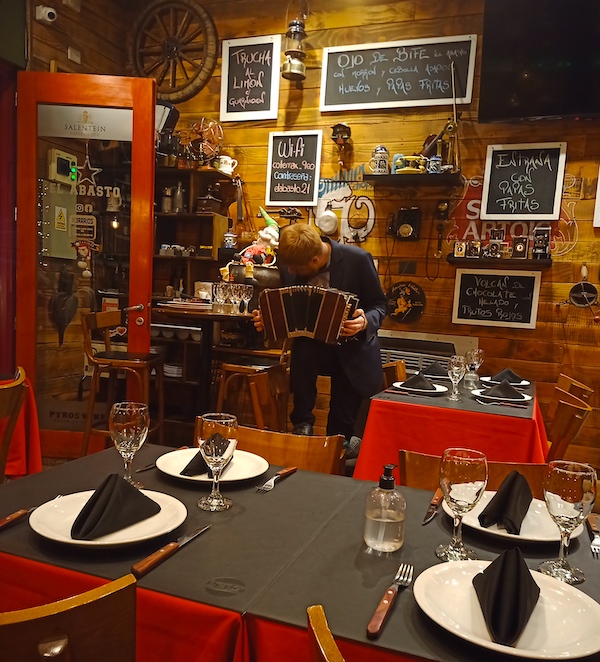
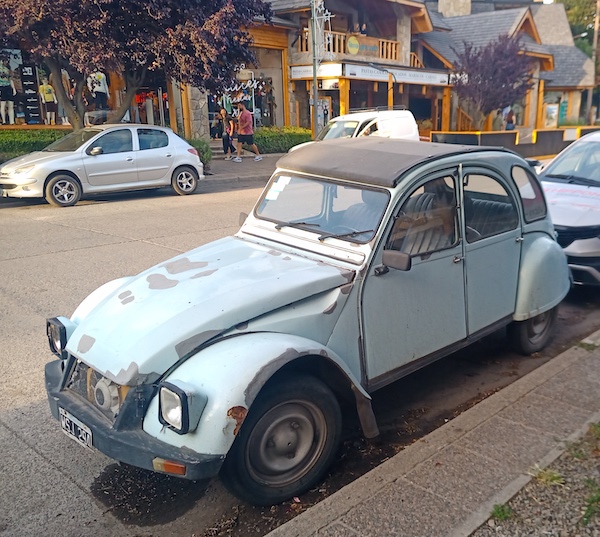

Che (his given name was Ernesto Guevara) was from Argentina, born in Rosario, and they built the La Pastera museum in an old forest workers’ barn where he and a friend took shelter for a while during one of his early trips around South America.
An interesting and complex character was old Che. Definitely a humanist who wanted better lives and futures for the poor and downtrodden people of South America, he was also dogmatic about his beliefs and not afraid of using violence against those who didn’t share them.
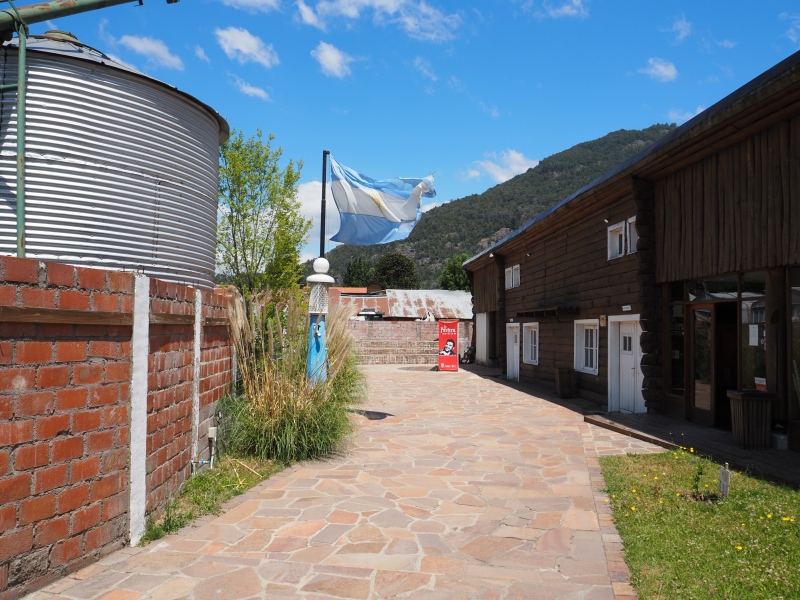
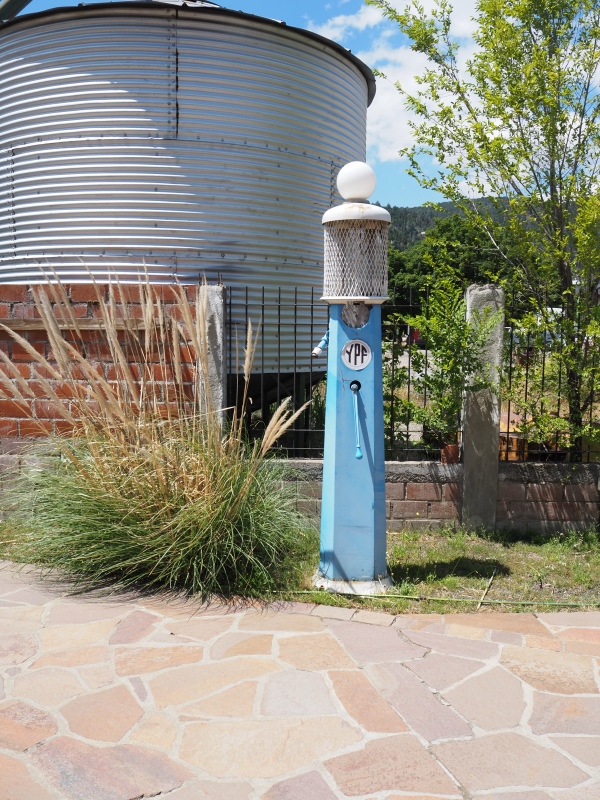
My main reason to going to El Calafate for a few days was to visit the Perito Moreno glacier (as opposed to the town of Perito Moreno, which is about 700km north).
The glacier is in a national park about 70km from El Calafate – a nice ride, especially towards the end once you’re in the park as the road winds sinuously around a lake with the odd iceberg or two floating in it.
Remarkable as one of the few glaciers in the world that is currently stable and even sometimes growing (most are, sadly due to climate change, in retreat), Perito Moreno is, in a word, mind-blowing.
The end of the glacier pokes into the lake and looks like that ice wall in Game of Thrones, without the fortifications. In places the wall is 60-70m high. The ice is more blue than white, with crevasses and crazy shapes moulded in the top surface.
And it really is alive. I could hear it groaning from time to time, and chunks of ice frequently drop off the front edge into the lake with mighty splashes. I witnessed one small piece falling (but not with the camera) and just missed seeing a huge shard, which toppled in and created ripples in the lake’s surface that took ages to dissipate.
Beyond the blue wall, the glacier rises back up into the mountains as far as the eye can see to where it originates. It is immense, and like much of Patagonia, made me feel very small and insignificant next to such a force of nature.
The walkways around the glacier snout set up by the Argentine national parks people are excellent and extensive. I reckon I walked about 6km that day trying to see as much as possible.
Mind you, for the price they charge foreigners (about AUD$35) just to get into the national park, it would want to be. And foreigners pay four times what the locals do. I can sort of understand it, but it still pissed me off.
You can do boat trips to get closer to the glacier, or an ice trek to get right on top of it. I did neither, happy enough to stick to the walkways.
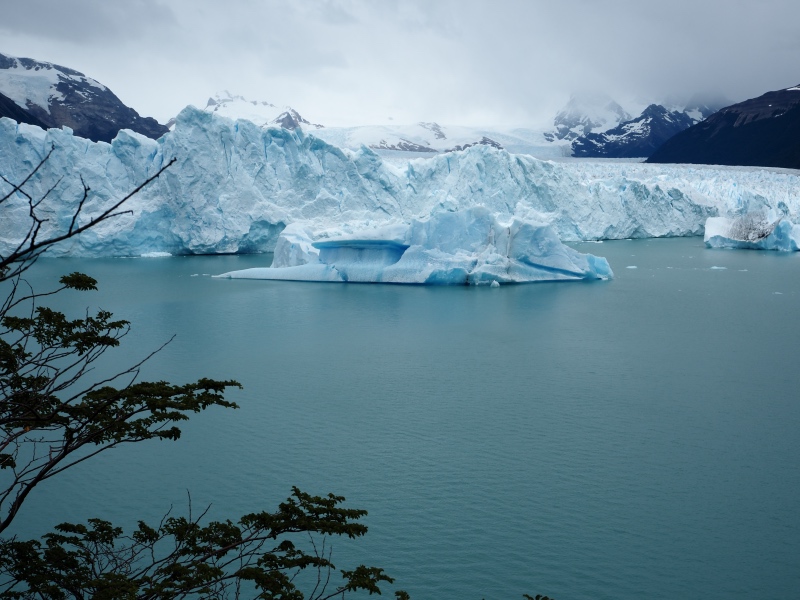
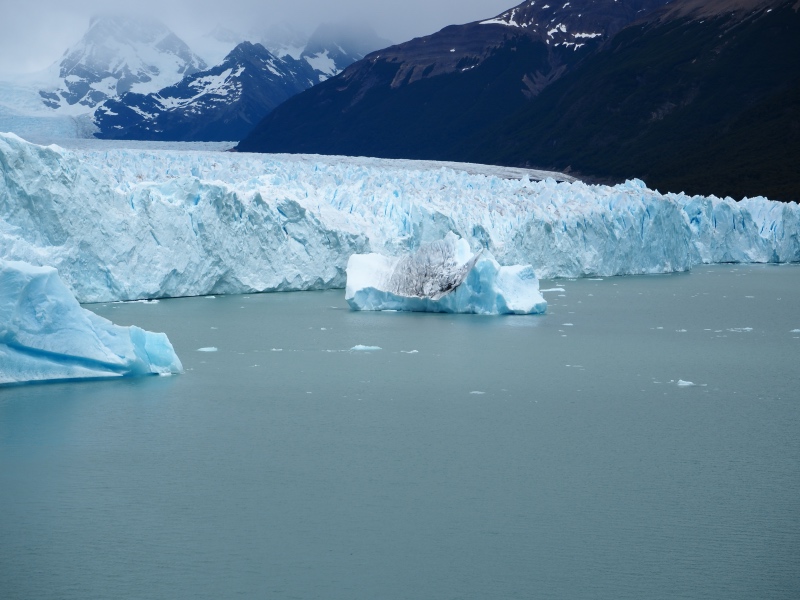

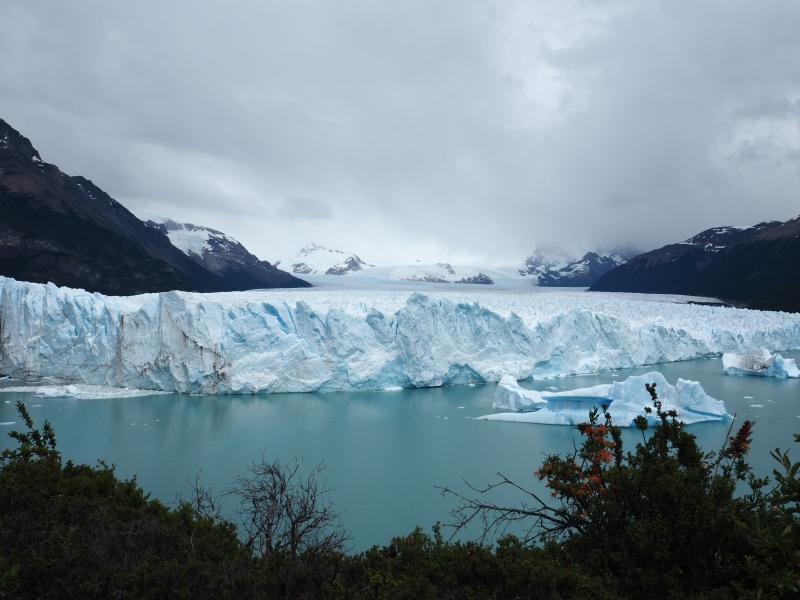

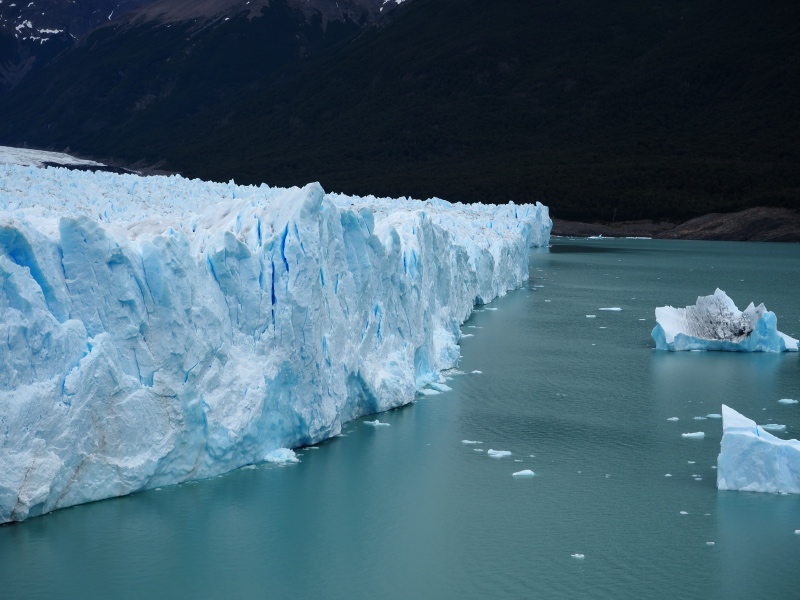
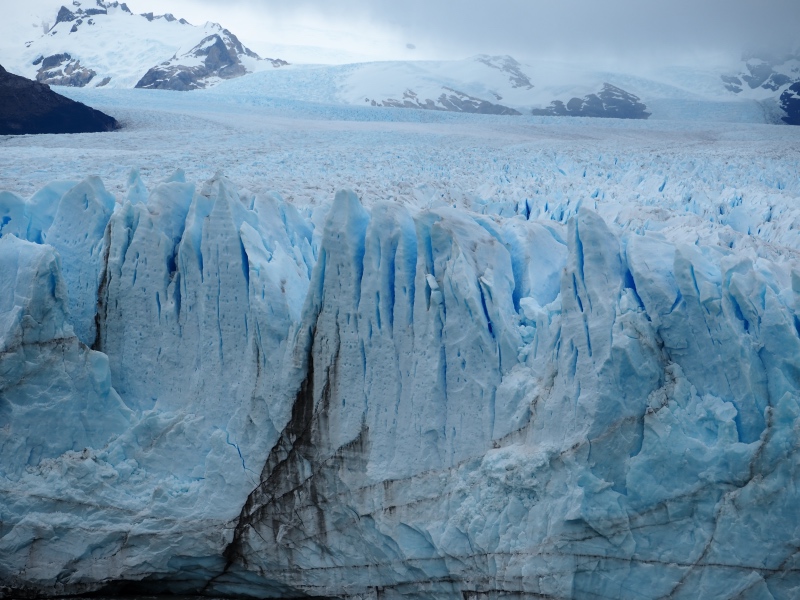


The bike got its first flat tyre in El Calafate. The front tyre had been very slowly losing air for a couple of weeks, which I put down to a faulty valve. It was manageable, with a daily check and small top-ups every few days.
Then it went completely flat when I went to ride back to my accommodation after the five-hour WU queue-fest. Which made a shit day just that little bit worse.
I wobbled to a servo close by and pumped it up again, but this time it went down straight away.
My cabin was a couple of kilometres away, so I rode back very slowly ready to get the tools and spare tube out. When I removed the incumbent tube, it was ripped at the base of the valve – probably from the ride back.
The change was slow and moderately painful. Lack of practice and a dread of pinching the spare tube forced me to take my time, and I skinned quite a few knuckles getting the new tube in place. But, I can say with no small measure of pride, it worked and is still working.
A new spare tube went in the kit in Pucon once I returned to Chile, along with a new rear tyre and an oil change.
Gotta give a shout-out to Christian from Torosucio in Pucon. I rocked up there the day before Christmas on the off chance they might have a suitable rear tyre, and he bent over backwards to help, more than happy to do the oil and filter change, plus adjust the chain, for a very reasonable cost. An excellent bloke, Christian is super keen to help keep vagabond foreign motorcyclists like myself on the road and enjoying their travels. Legend.
The new rear bag is… interesting. Chinese-made, it is branded Super-Run and was super cheap. There also wasn’t anything else in stock to fit the WR. I can’t say I’m unhappy about it. It tramlines alarmingly on grooved pavement, but grips surprisingly well and is wearing very respectably after more than 2000km.
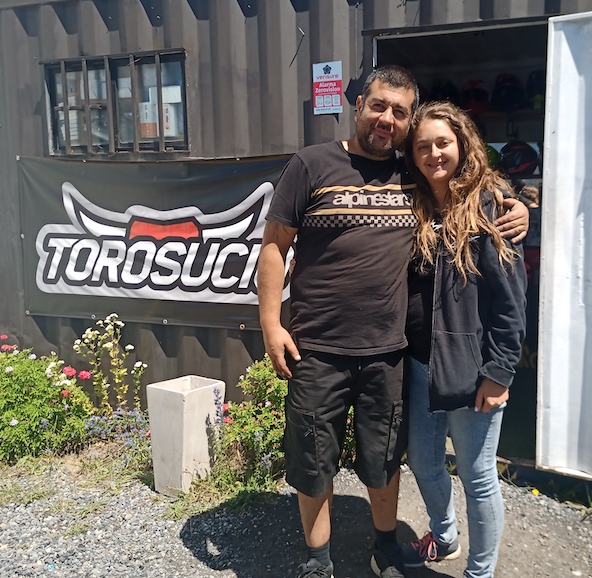
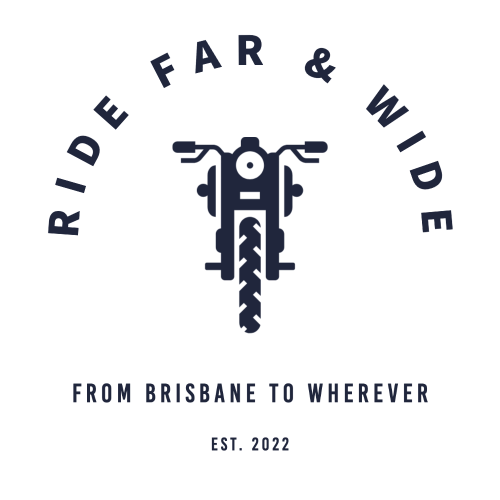
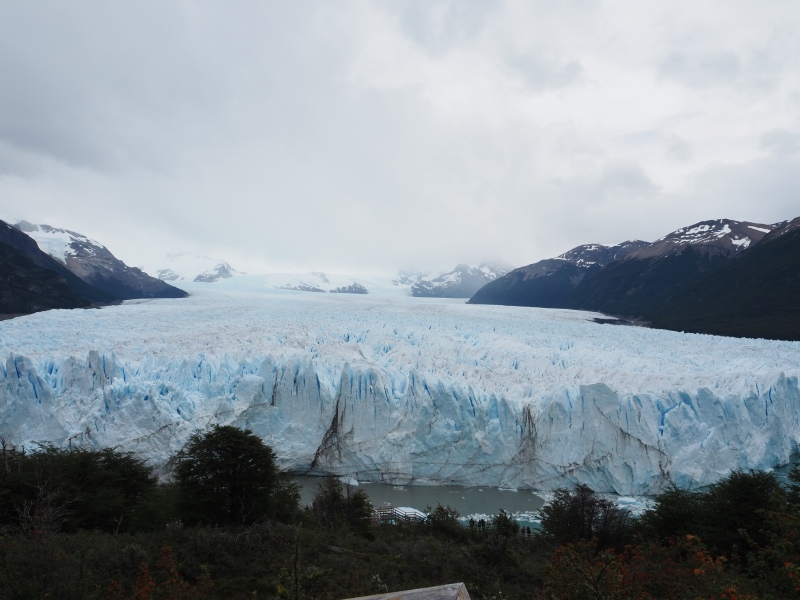
Comments
2 responses to “Going with the flow”
It’s refreshing to see that you are taking on the small trials and tribulations with the laidback attitude that we all know you by Pete. Many a fellow solo traveler on a motorbike would’ve possibly packed it in and taken the easy option.
The glacier looks stunning. So good to hear one is growing instead of receding.
HAPPY NEW YEAR mate, and can’t wait to see what 2023 holds for you. 🍻
I love that being a subscriber to your post alerts me when a new post is up and saves my elderly brain from trying to remember to check every couple of days. Thank you.
Also thanks to people like Christian who help you on your way with courtesy, charm and goodwill. It seems you have met many such people on your journey and I am sure you will meet many more. The world is full of good people we don’t know or hear about very often.
Happy New Year and safe travels for 2023